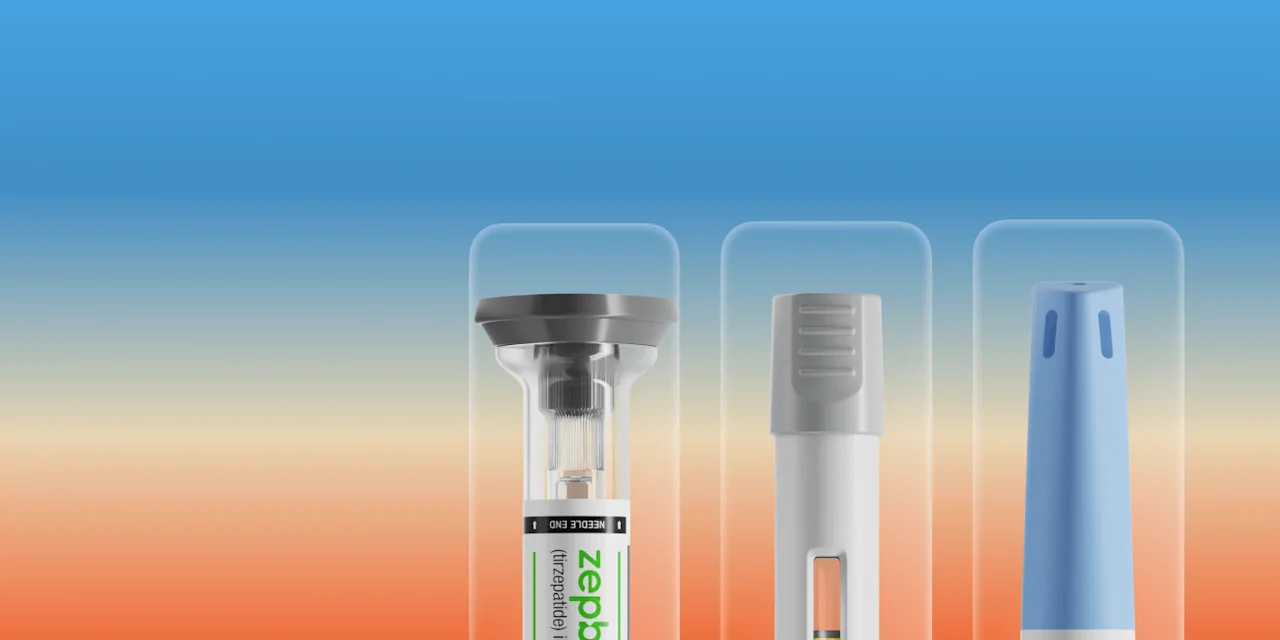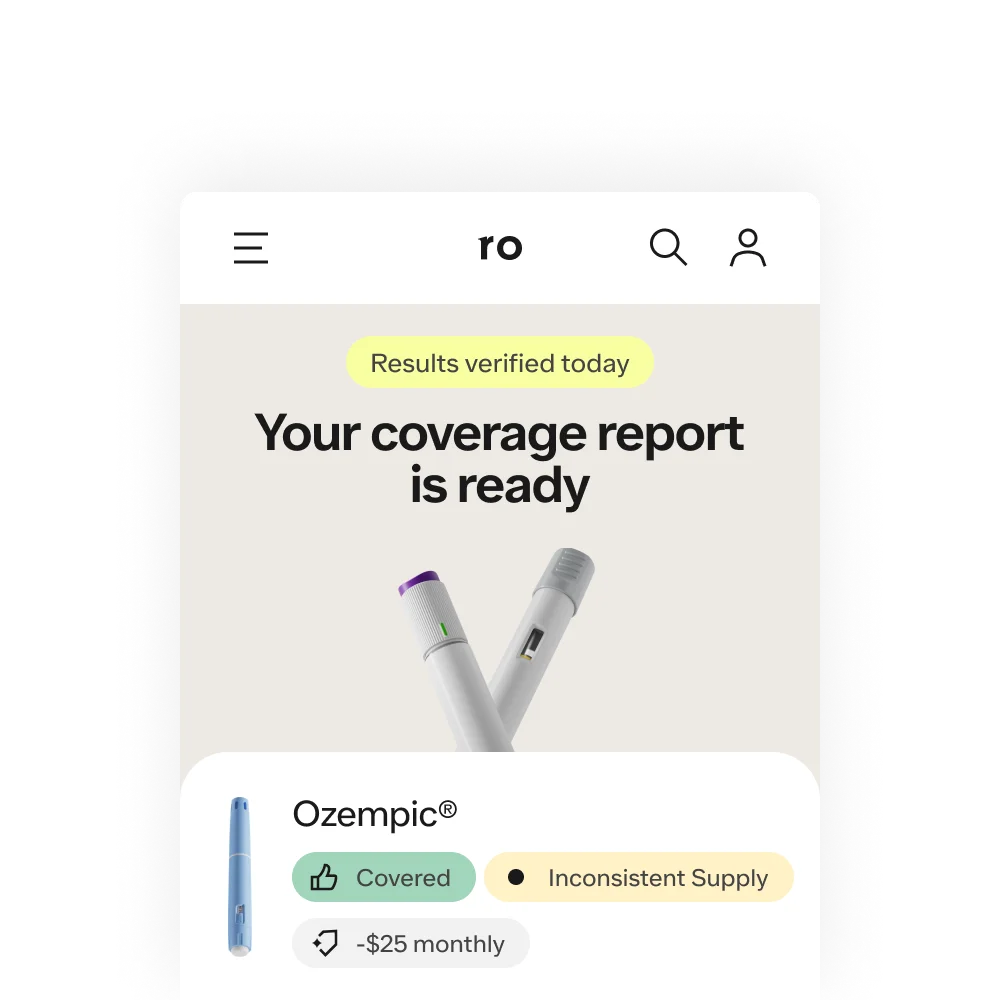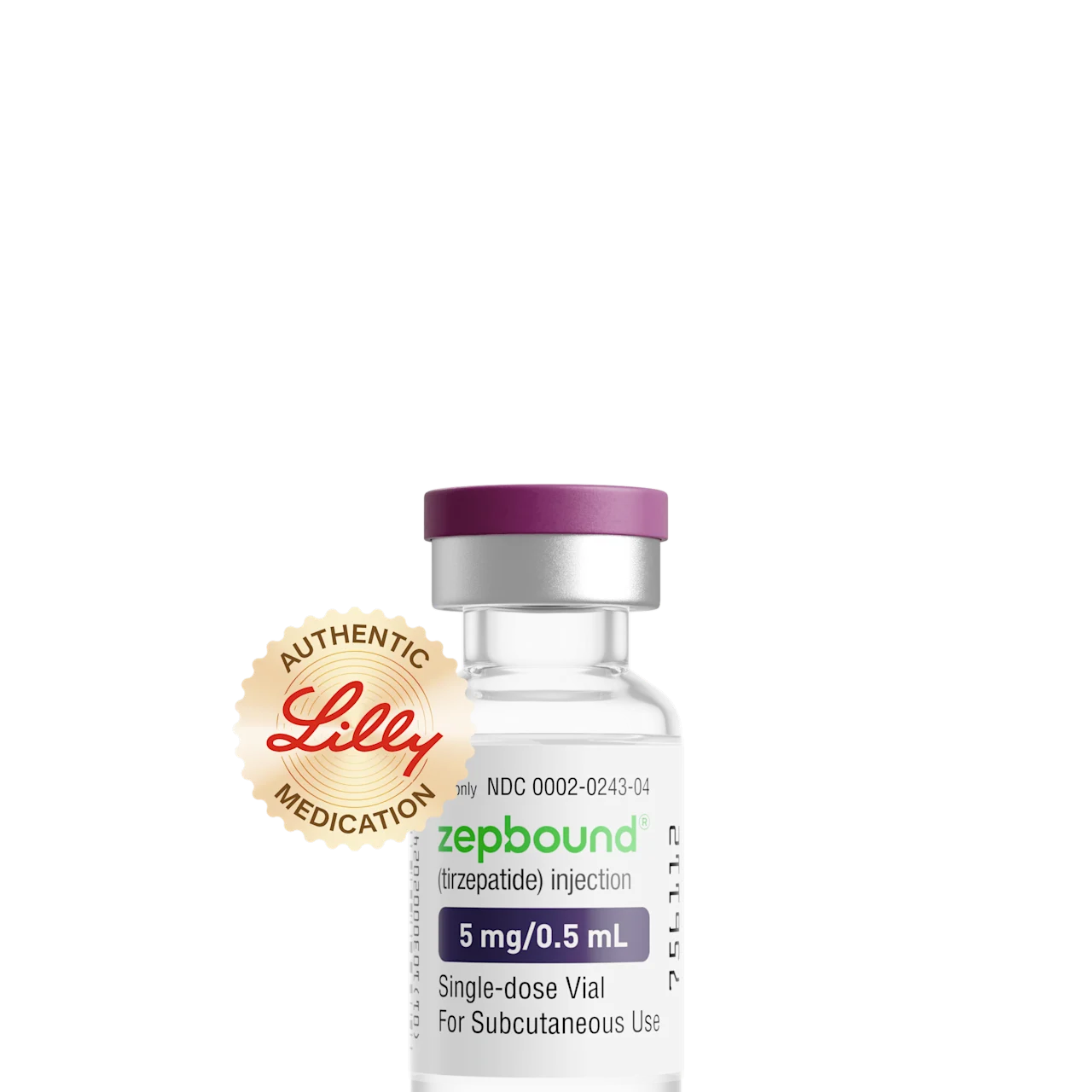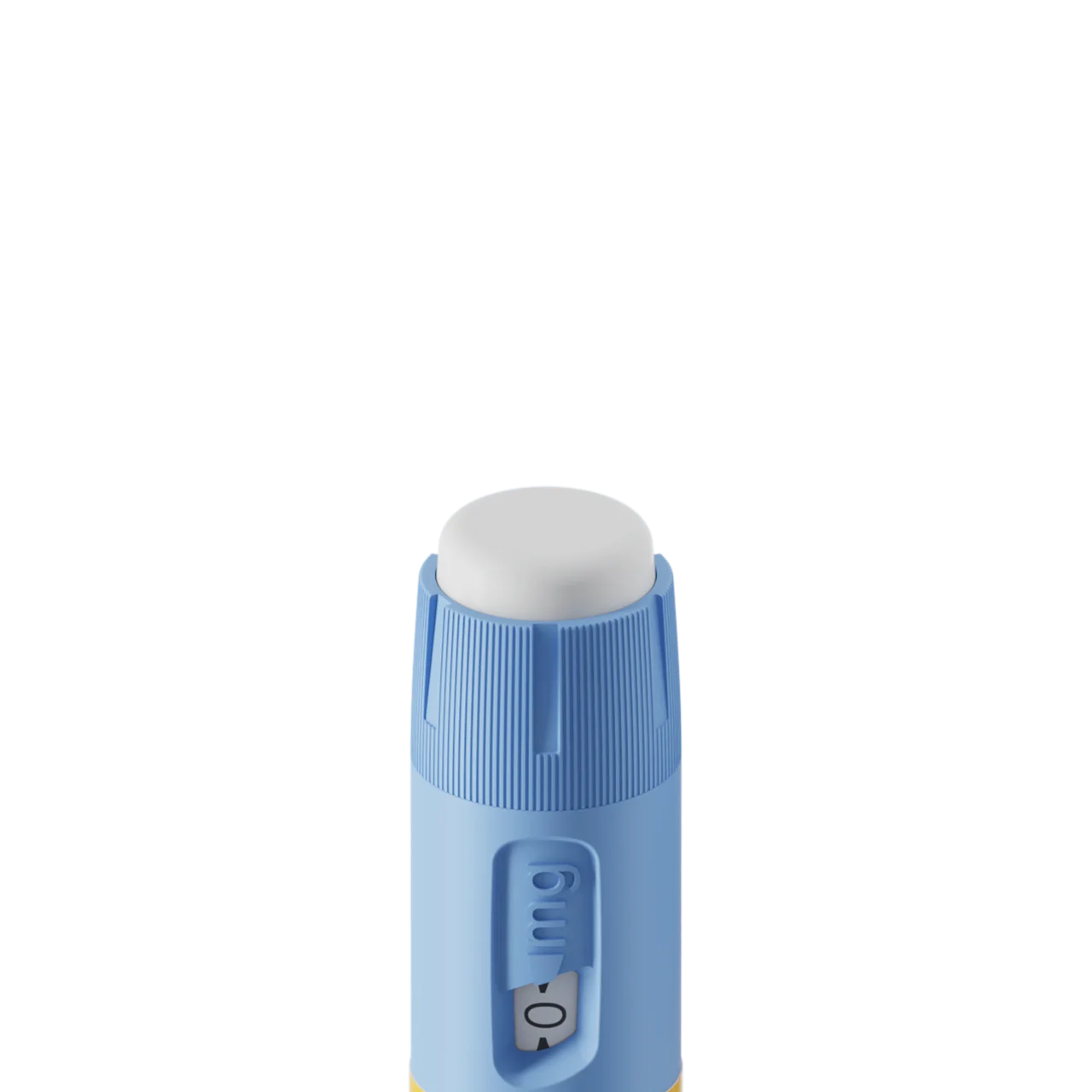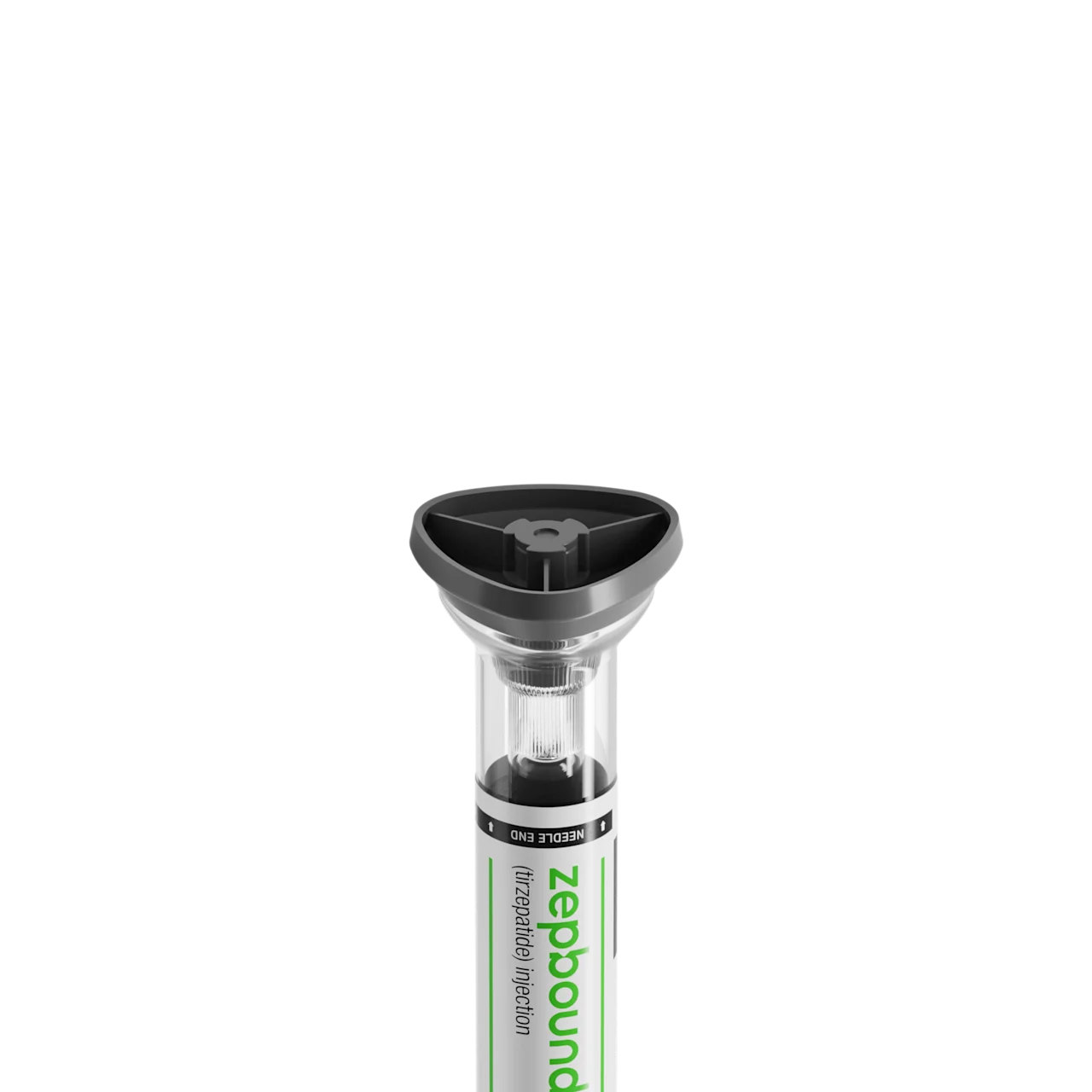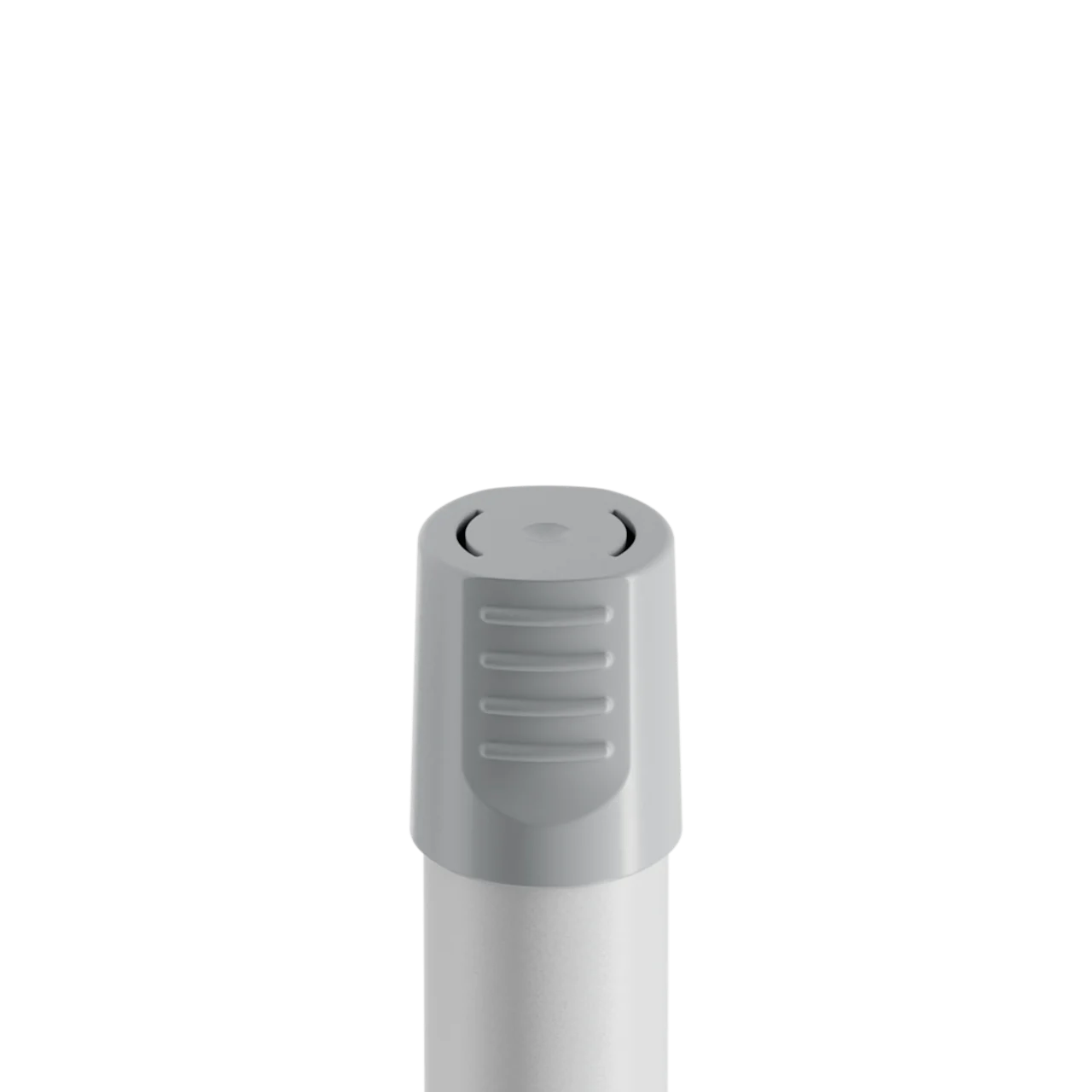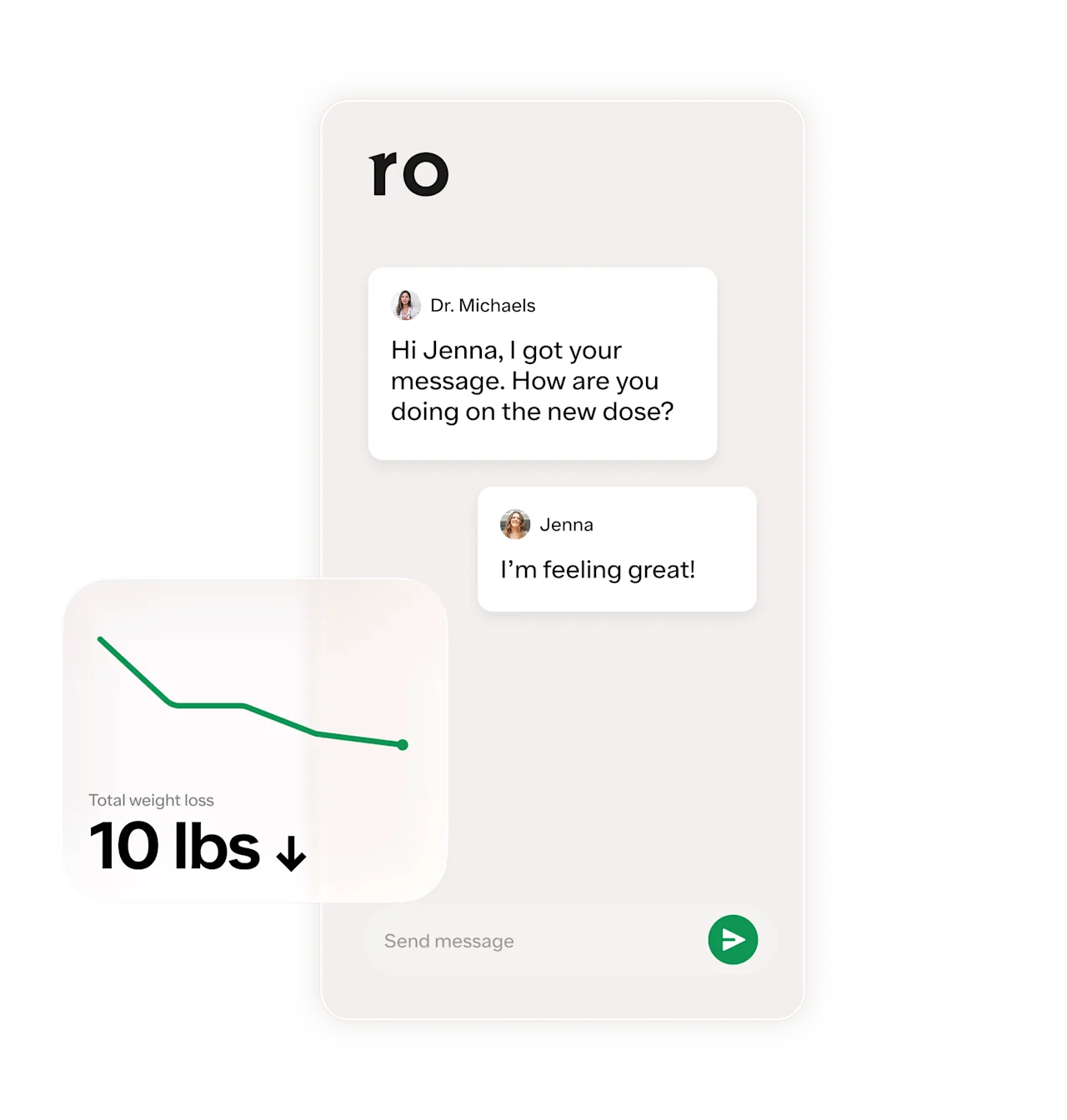Key takeaways
You should not start Wegovy at 1.7 mg. Healthcare providers prescribe gradual dose increases to minimize side effects, allow your body to get used to the medication, and find the right dose for you.
Wegovy begins working even at the starting dose of 0.25 mg, and many people lose weight before reaching their maintenance dosage.
Following Wegovy’s recommended dosing schedule, it can take 13 weeks to reach the 1.7 mg maintenance dose.
Here's what we'll cover
Here's what we'll cover
Here's what we'll cover
Key takeaways
You should not start Wegovy at 1.7 mg. Healthcare providers prescribe gradual dose increases to minimize side effects, allow your body to get used to the medication, and find the right dose for you.
Wegovy begins working even at the starting dose of 0.25 mg, and many people lose weight before reaching their maintenance dosage.
Following Wegovy’s recommended dosing schedule, it can take 13 weeks to reach the 1.7 mg maintenance dose.
If you’ve been prescribed Wegovy (semaglutide), you may be wondering if, rather than spending months ramping up to a maintenance dosage of 1.7 mg or 2.4 mg, you can simply start with the Wegovy 1.7 mg dose.
If you ask your healthcare provider, “Can I start Wegovy at 1.7 mg?” they’ll likely tell you “no.” Skipping ahead and starting with the Wegovy 1.7 mg dose can lead to intense side effects, which is why the gradual dosing process is recommended.
Read on to understand why a gradual dose escalation is recommended to get the most out of your Wegovy treatment.
What is Wegovy?
Wegovy is a prescription medication that’s approved by the US Food and Drug Administration (FDA) for two indications, when used along with diet and exercise:
Weight loss and long-term weight management in people with obesity or overweight and a weight-related health condition
Reducing cardiovascular risk in people who have heart disease and obesity or overweight
The medication belongs to a group of drugs called GLP-1s, which work by mimicking a gut hormone called glucagon-like peptide-1 (GLP-1). These drugs slow down digestion, alter your brain’s sensation of hunger, and reduce your food cravings. Together, these effects help you feel full sooner, give you more control over your appetite, and cause weight loss.
GLP-1 Important Safety Information: Read more about serious warnings and safety info.
Can I start Wegovy at 1.7 mg?
No, you should not start Wegovy at 1.7 mg, as your body needs time to adjust to the medication and its side effects. Starting with the Wegovy 1.7 mg dose can increase your risk of serious side effects. The starting dose of Wegovy is 0.25 mg weekly. Your healthcare provider will gradually increase your dose every four weeks until you reach your maintenance dose of either 1.7 mg or 2.4 mg, depending on how you respond to the medication.
Following this dose escalation schedule, it can take up to 13 weeks, or around three months, to reach the 1.7 mg dose (and 17 weeks, or four months, to reach the 2.4 mg dose). Healthcare providers call this type of dosage schedule titrating. Titrating your dose keeps side effects manageable as your body gets used to a new medication. Basically, titrating sets you up for success so you can tolerate your maintenance dose of Wegovy when you reach it. The maintenance doses of Wegovy are 1.7 mg and 2.4 mg for most people.
Note that if you’re having trouble tolerating a dose during the escalation process, your healthcare provider may recommend staying at that dose longer than four weeks before increasing to the next step.
It’s understandable to be excited and want to jump right in and start Wegovy at 1.7 mg, but we encourage you to trust the process. Wegovy starts working once you start taking it, and many people experience weight loss well before they reach the 1.7 mg dose. In one study, people lost 2% of their baseline body weight within the first month of taking Wegovy. By the time they reach the 1.7 mg dose (just over three months), people lose an average of 6%, or nearly 15 pounds.
Side effects of Wegovy 1.7 mg (and other doses)
Wegovy’s side effects can be a lot to manage, especially in the beginning. The good news is that most of these side effects—especially nausea and diarrhea—tend to be most frequent and intense when titrating your dose, before lessening with time as your body acclimates to the medication. Here’s an overview of the common side effects of Wegovy 1.7 mg:
Diarrhea
Vomiting
Constipation
Abdominal pain
Headache
Fatigue
Upset stomach or indigestion
Dizziness
Abdominal bloating
Belching
Hypoglycemia (low blood sugar) in people with type 2 diabetes
Flatulence
Stomach flu
Heartburn
Common cold
Other, more serious side effects are possible. While not a complete list, serious side effects that have been reported with Wegovy include:
Severe gastrointestinal reactions
Sudden problems affecting your pancreas, gallbladder, or kidneys
Increased heart rate
New or worsening depression, including suicidal thoughts or behaviors
Stay in touch with your healthcare provider throughout the titration process, and let them know if you are experiencing any side effects that concern you. They can slow down the titration process or provide guidance for managing side effects. Some side effects, such as nausea and vomiting, are more common with higher doses of Wegovy.
The maximum recommended dose of Wegovy is 2.4 mg, but both 1.7 mg and 2.4 mg are effective maintenance doses. If you titrate up to the 2.4 mg dose and the side effects are too much, your provider can bring you back down to the 1.7 mg dose. After a few more weeks on the Wegovy 1.7 mg dose, they may have you try the 2.4 mg dose again.
How to take Wegovy 1.7 mg (and other doses)
Wegovy is injected once a week, on the same day each week. You can take it at any time of day, with or without food. The important thing is to inject Wegovy on the same day each week, and to rotate through the injection sites with each injection. The injection sites for Wegovy include your thigh, abdomen, and upper arm. You’ll administer the injection subcutaneously (just under the skin, which tends to be relatively painless compared to intramuscular shots, where the needle goes deep into the muscle).
Each Wegovy pen comes pre-filled with a single dose of the medication, so you’ll inject the entire dose and then dispose of the pen in an FDA-cleared sharps container. Wegovy should be stored in its original carton in the fridge (36°F–46°F or 2°C–8°C). It can also be stored at room temperature (46°F–86°F or 8°C–30°C) for up to 28 days.
Wegovy dosing basics
A carton of Wegovy contains four pens, each of which contains a single dose of semaglutide ( Wegovy’s active ingredient) in a liquid solution. Wegovy is available in five dosage strengths:
0.25 mg of semaglutide per 0.5 mL of solution (0.25 mg/0.5 mL)
0.5 mg/0.5 mL
1 mg/0.5 mL
1.7 mg/0.75 mL
2.4 mg/0.75 mL
The recommended dosage schedule for Wegovy starts with 0.25 mg weekly. Every four weeks, your healthcare provider will increase your dosage to the next dosage strength until you reach a maintenance dosage that works for you, like this:
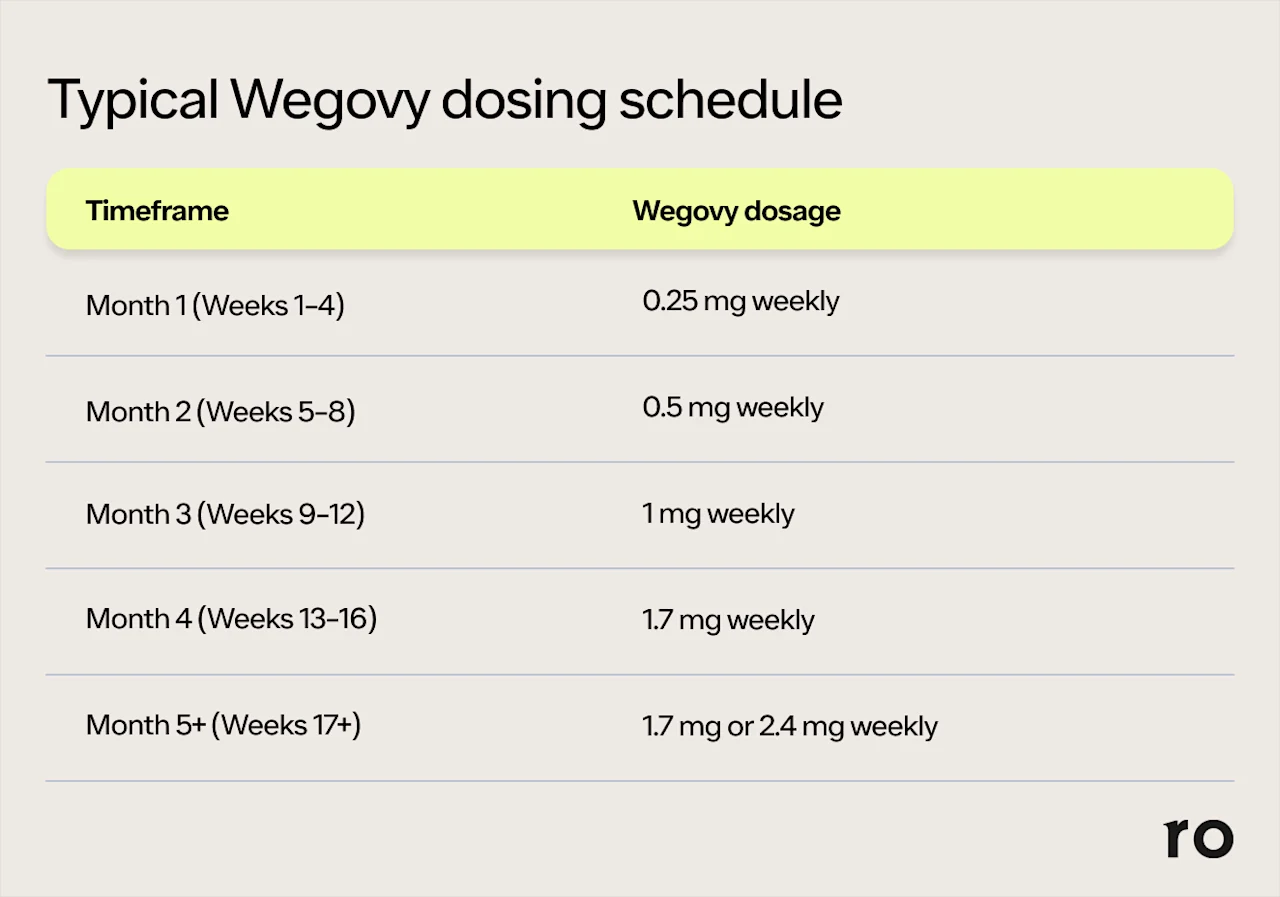
The two maintenance dosages for Wegovy are 1.7 mg and 2.4 mg. The higher 2.4 mg dosage is recommended, but some people may find the side effects to be more tolerable at the 1.7 mg dose.
If side effects become too much at any point during the titration process, talk to your healthcare provider. They can slow down the titration process to give your body more time to adjust to the drug. Do not skip a week of Wegovy.
What affects Wegovy dosing?
There are no special dosing adjustments for certain health conditions with Wegovy. The main thing that affects Wegovy dosing is your response to side effects. These side effects can be a lot to get used to, and some people are more sensitive than others. That’s one main reason why some people stick with the Wegovy 1.7 mg dose instead of increasing to the 2.4 mg maintenance dose.
Stay in touch with your healthcare provider throughout the titration process. If the side effects start to feel unbearable, your healthcare provider can slow down the titration process and keep you at a lower dose for a longer period of time. If side effects still feel difficult to tolerate at either 1.7 mg or 2.4 mg, your healthcare provider may recommend a different GLP-1 medication, such as Zepbound (tirzepatide) or Saxenda (liraglutide).
Where to get Wegovy 1.7 mg (and other doses)
You can get Wegovy online or in person. You’ll need to meet with a licensed healthcare provider who can write you a prescription, as Wegovy is not available over the counter. Once you have your prescription for Wegovy, you can fill it at a local or online pharmacy.
Without insurance, the cost of Wegovy starts at $1,349, depending on the pharmacy you use. If you’re eligible for the Wegovy Savings Offer, you may be able to get Wegovy for less than $500 or even completely free. If you’re not eligible for the official savings program, you can still save on the cost of Wegovy using Wegovy coupons from websites like SingleCare, GoodRx, and Optum Perks.
Rx weight loss with Ro
Get access to prescription weight loss medication online
Bottom line
Starting Wegovy at 1.7 mg might seem like a shortcut to faster results, but it can actually backfire. Wegovy’s gradual dose escalation process—known as titration—is designed to help your body adjust to the drug’s side effects so you can stick with the medication and experience the most weight loss success.
The starting dosage of Wegovy is 0.25 mg weekly. This slow start helps your body adjust to the medication, keeping side effects like nausea and vomiting more tolerable.
Titration takes time on Wegovy—at least 13 weeks to reach 1.7 mg and at least 17 weeks to reach 2.4 mg. Your dose will increase every four weeks, and you should follow this timeline unless advised otherwise by your healthcare provider.
Early weight loss is possible before reaching the highest dose. Many people begin losing weight within the first month of taking Wegovy, with an average 6% body weight reduction by the time they reach 1.7 mg.
Both 1.7 mg and 2.4 mg of Wegovy are effective maintenance doses. While 2.4 mg generally leads to greater weight loss, 1.7 mg may be better tolerated by some people, since the higher the dose, the more side effects you are likely to experience.
Wegovy’s side effects can be managed with your provider’s help. If you're struggling, your provider can slow down your titration schedule or switch your medication if needed.
Frequently asked questions (FAQs)
Is 1.7 mg of Wegovy strong?
The 1.7 mg dose is one of the standard maintenance dosage strengths of Wegovy, but it is not the highest dosage strength of Wegovy. The maximum dose of Wegovy is 2.4 mg.
Can I go from 0.5 mg to 1.7 mg of Wegovy?
Wegovy follows a gradual dosing schedule, where you start at 0.25 mg weekly and increase every four weeks until you reach a maintenance dosage of 1.7 mg or 2.4 mg. Once you reach the 0.5 mg dose, your healthcare provider will likely recommend staying at that dosage for four weeks before increasing to the 1 mg dose. After you spend at least four weeks on the 1 mg dose, your healthcare provider will have you increase to the 1.7 mg dose of Wegovy.
Do higher doses of Wegovy work better?
Yes, the highest 2.4 mg dose of Wegovy produces more weight loss and cardiometabolic improvements than the 1.7 mg dose. But higher doses also come with more side effects. Either the 1.7 mg or 2.4 mg dose can be an effective maintenance dosage for Wegovy. You’ll work with your provider to find the optimal dose for you.
What are the results of 1.7 mg of Wegovy?
In one study, people lost about 6% of their body weight in the first three months of taking Wegovy (about the same amount of time it takes to reach the 1.7 mg dose). In another study, people lost almost 10% of their body weight after 68 weeks (about a year and a half) on 1.7 mg of Wegovy.
DISCLAIMER
If you have any medical questions or concerns, please talk to your healthcare provider. The articles on Health Guide are underpinned by peer-reviewed research and information drawn from medical societies and governmental agencies. However, they are not a substitute for professional medical advice, diagnosis, or treatment.
Wegovy Important Safety Information: Read more about serious warnings and safety info.
Zepbound Important Safety Information: Read more about serious warnings and safety info.
Saxenda Important Safety Information: Read more about serious warnings and safety info.
References
Bergmann, N. C., Davies, M. J., Lingvay, I., & Knop, F. K. (2023). Semaglutide for the treatment of overweight and obesity: A review. Diabetes, Obesity & Metabolism, 25(1), 18–35. doi: 10.1111/dom.14863. Retrieved from https://pmc.ncbi.nlm.nih.gov/articles/PMC10092086/
Caffrey, A. R. & Borrelli, E. P. (2021). The art and science of drug titration. Therapeutic Advances in Drug Safety, 11, 2042098620958910. doi: 10.1177/2042098620958910. Retrieved from https://pmc.ncbi.nlm.nih.gov/articles/PMC7967860/
Friedrichsen, M., Breitschaft, A., Tadayon, S., et al. (2021). The effect of semaglutide 2.4 mg once weekly on energy intake, appetite, control of eating, and gastric emptying in adults with obesity. Diabetes, Obesity & Metabolism, 23(3), 754–762. doi: 10.1111/dom.14280. Retrieved from https://www.ncbi.nlm.nih.gov/pmc/articles/PMC7898914/
Ghusn, W., De la Rosa, A., Sacoto, D., et al. (2022). Weight loss outcomes associated with semaglutide treatment for patients with overweight or obesity. JAMA Network Open, 5(9), e2231982. doi: 10.1001/jamanetworkopen.2022.31982. Retrieved from https://pmc.ncbi.nlm.nih.gov/articles/PMC9486455/
Novo Nordisk-a. (2024). Highlights of Prescribing Information: Wegovy (semaglutide) injection, for subcutaneous use. Retrieved from https://www.novo-pi.com/wegovy.pdf
Novo Nordisk-b. (2024). What is the list price for Wegovy and will it impact me?. Retrieved from https://www.novocare.com/obesity/products/wegovy/let-us-help/explaining-list-price.html
Singh, G., Krauthamer, M., & Bjalme-Evans, M. (2022). Wegovy (semaglutide): a new weight loss drug for chronic weight management. Journal of Investigative Medicine: The Official Publication of the American Federation for Clinical Research, 70(1), 5–13. doi: 10.1136/jim-2021-001952. Retrieved from https://pmc.ncbi.nlm.nih.gov/articles/PMC8717485/
Wilding, J. P. H., Batterham, R. L., Calanna, S., et al. (2021). Once-weekly semaglutide in adults with overweight or obesity. The New England Journal of Medicine, 384(11), 989–1002. doi: 10.1056/NEJMoa2032183. Retrieved from https://www.nejm.org/doi/full/10.1056/NEJMoa2032183


